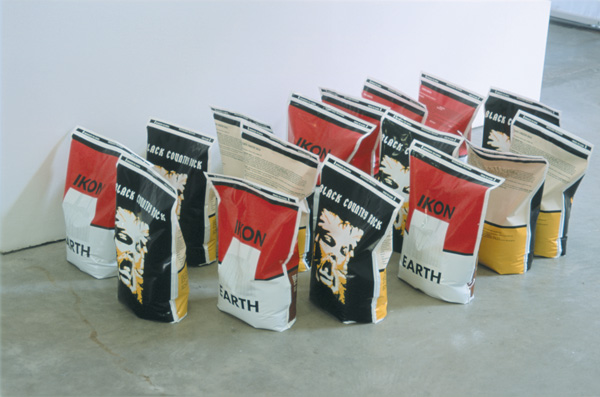23 Thoughts About Dirt

- The poet and playwright Friedrich Schiller used to keep a batch of rotten apples under the lid of his writing desk.
- Whenever his thinking became impacted he would lift the lid, breathe in the sweet brown rot, and his mind would loosen up again.
- Marcel Duchamp performed a similar service with a few rotten apples of his own: a urinal, a snow shovel, a bicycle wheel.
- Whenever art has felt itself in a quandary, unsure of its social value or what (if anything) should happen next, a whiff of the ready-mades has made things possible again.
- The problem now is that the ready-mades are no longer rotten.
- The original ones—whatever that means—actually did rot, that is, they served their purpose and were discarded and new rotten apples took their place: a stuffed goat, a can of excrement, some cowboys.
- As is often the case—and, in fact, as is the modus operandi of art museums—at different times it has been useful to rescue these objects from destruction.
- The conflict between the museological desire for permanence and the creative catalysis of decay has animated sculptural practice ever since.
- For John Cage and his collaborators, this way of paying attention had a political dimension in that it minimized the importance of the artist at the same time that it welcomed coincidences from the wider world.
- It was and is fundamentally egalitarian to hold that because a car horn and a French horn both make sounds, both are capable of being musical.
- We should apply this outlook to the production of artworks!
- If every bit of matter in the universe could have a turn at being art, then the conflict between permanence and destruction would become irrelevant, since all matter at all times would be on its way to becoming an artwork and all artworks would be on their way to becoming something else.
- We could put to rest, forever, the boring question of whether something is art or not; instead, we would only have to wonder whether it was art at that moment.
- Our only concern as artists would be to keep things flowing and to invent new images and forms for everything to flow through so that eventually those new images and forms could enter the flow, too.
- IKON EARTH is one such invention, a brand of potting soil that was produced in Birmingham, England, under the auspices of the Ikon Gallery.
- The idea was to collect precise categories of postconsumer data—i.e., garbage—from the shopkeepers of Birmingham, pass it through the Ikon Gallery as if the museum were a kind of refinery, and then sell it back to the people of Birmingham as an exclusive local brand.
- The price was £7.99 for a six-liter bag, pretty expensive for potting soil but pretty cheap for a work of art—especially one that, if properly exhibited, could produce gladiolas or Brussels sprouts.
- When the Yale University Art Gallery purchased twenty-nine bags of IKON EARTH through my Web site, I needed to get some palettes on which to make the shipment. In the pages of the Uline catalogue I found a shipping palette that was made of recycled materials. When the palettes arrived and I began stacking the artworks on to them, a beautiful thing happened: I noticed that both items had, at other times, taken the form of other things: a wall, a digital file, a fish, a tree. And now here they were, fixed in the exact moment that their material trajectories were overlapping in space.
- Before the museum placed its order, the materials that make up Homage to John Cage existed, but Homage to John Cage itself did not exist.
- Things had to happen in a certain way in order for the artwork to become visible.
- To paraphrase John Cage, It was like a glass of milk. You need the glass, and you need the milk.
For related content see Ikon Earth or (an Homage to John Cage) in the collection of the Yale University Art Gallery